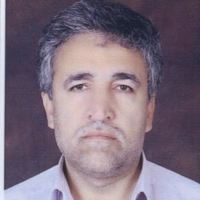Measurement of specific radioactivity of natural and artificial radioactive nuclei and calculation of radiological hazards related to them in drinking water of Isfahan region
Safe water is one of the basic needs of humans that must be free of any contamination. One of the water pollutants is radioactive nuclei, which naturally and artificially occur in the environment. Therefore, accurate measurements of water radioactivity are very important. The activity concentration of 226Ra, 232Th, 40K, and 137Cs in 26 drinking water samples from the Isfahan province was measured by gamma spectrometry using a high purity germanium detector (HPGe). Activity concentrations of 226Ra for all samples were below the detection limit. The average specific activity of radionuclides 232Th, 40K and 137Cs were measured as 1.40, 82.23 and 0.0.40 respectively in Bq/l. Annual effective doses as a result of ingestion of water containing 232Th, 40K and 137Cs radionuclides for adults ranged from 0.317 to 1.153 with an average of 0.784, from 0.059 to 0.150 with an average of 0.114 and from 0.001 to 0.016 with an average of 0.003 in μSv/y respectively. The excess lifetime cancer risk was calculated for three age groups, which was 1.59 ×10-6 for adults. The results showed that the annual effective dose as a result of drinking water consumption was lower than the WHO Individual Dose Criterion (100 μSv/y), so it does not pose a threat to the inhabitants of this area and has good quality.
-
Analysis of trace elements in various types of Iranian and imported rice using the neutron activation method
*, Mohammad Hossein Choopan Dastjerdi, Mojtaba Shekari, Mohadese Feyzi
Radiation Physics and Engineering, Autumn 2024 -
Determining Trace Elements in Agricultural Products of Chogha Village of Arak, Iran
Reza Pour Imani *, Mohammadhosein Choopan Dastjerdi, Saeed Ghahani, Marziyeh Mashayekhi
journal of Applied Physics,



